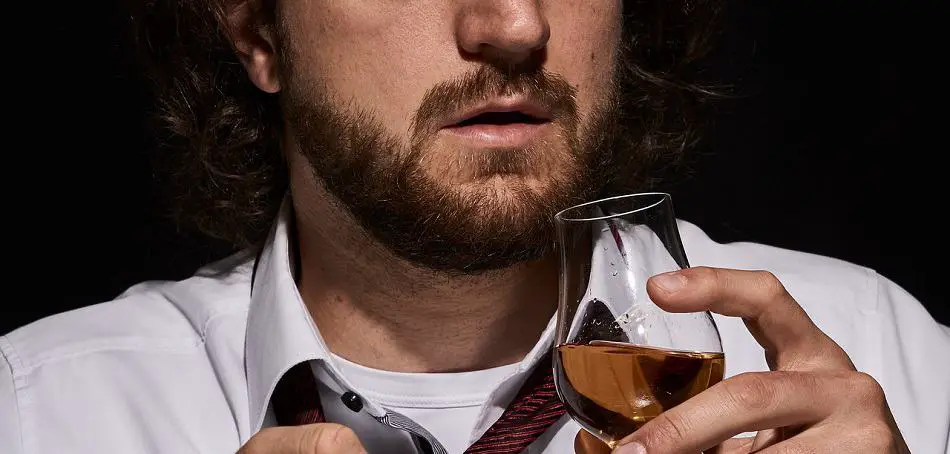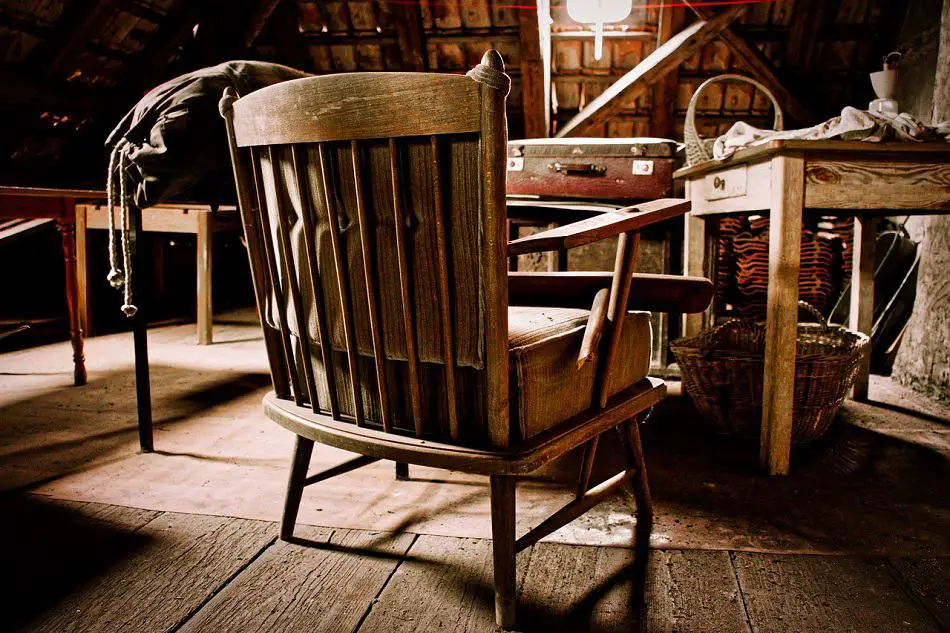The smell of whiskey is very important as it adds to the overall whiskey experience, but it can be very hard to know exactly how to describe given whiskey aromas and smells. However, help is at hand.
So what does whiskey smell like? Whiskey can have many different smells, with an almost infinite number of ways to describe them. To help identify some of the more common smells, Aroma Wheels have been developed that group together smells in families with aromatic similarities, for example, grainy, grassy, fragrant, fruity, peaty, woody, winey and off notes.
These are only the general categories, however. We still need to take a look at the subcategories and their descriptors. We’ll also look at where the different whiskey smells come from, what smells certain whiskeys have and most importantly of all, how to detect them.

What Whiskey Smells Like and How to Describe Aromas
There are lots of different whiskeys each having several different aromas and smells. It can be difficult to describe some of the smells, so even if you do pick up an aroma or two you may be lost for words when it comes to defining what you’ve smelled.
To make life easier Aroma Wheels have been created. These are diagrams of the most commonly used words to describe whiskey smells, grouped together in families with aromatic similarities. This instantly gives you lots of words that might describe what you’re smelling or at least puts you in the ballpark of the right word making finding it much easier. You can also use it to define aromas by a process of elimination.
Aroma wheels have been around since the 1970s and several different ones have been developed. I like to use the one developed by Charles MacLean which groups the aromas into the above mentioned eight categories: Grainy, grassy, fragrant, fruity, peaty, woody, winy and off notes.
Each category has anywhere from 2 – 6 subcategories and each subcategory has 4 – 8 adjectives that will help describe what you’re smelling.
You can check out the aroma wheel here , but for those who prefer not to have to turn paper around to read what it says, I’ve put that information into the following table:
, but for those who prefer not to have to turn paper around to read what it says, I’ve put that information into the following table:
| General | Subcategory | Descriptors |
|---|---|---|
| Grainy | Cereal | breakfast cereal, porridge, bran, toast, digestive biscuits, coffee |
| Malt | malted milk, malt barn, dried hops, Horlicks, Marmite | |
| Grassy | Fresh | cut grass, green vegetables, green sticks, tomato, leafy, mint |
| Dried | hay, straw, chaff, dried tea, stewed tea, tobacco, dried herbs | |
| Fragrant | Floral | perfumed, rose, lavender, geranium, carnation, artificial floral |
| Solvent | bubble-gum, peardrops, fresh paint, acetone, pine essence | |
| Honey | clover flowers, heather pollen, heather honey, mead beeswax | |
| Fruity | Fresh Fruit | apple, pear, peach, melon, fig, cherry, green banana, redcurrant |
| Citrus Fruit | lemon, lime, orange mandarin, grapefruit, pineapple | |
| Dried Fruit | raisins, sultanas, figs, mince pies, Xmas cake, marmalade | |
| Tinned Fruit | peaches, pears, fruit salad, lychees, tiny | |
| Peaty | Maritime | sphagnum moss, brine, seaweed, shellfish, fresh fish |
| Medicinal | lint, Elastoplast, hospitals, mouthwash, antiseptic, iodine, creosote | |
| Smoky | lapsong suchong tea, peat smoke, smoked salmon, kippers, tar | |
| Woody | Vanilla | ice cream, custard, caramel, fudge, syrup, crème brulée |
| Spicy | clove, nutmeg, cinnamon, liquorice, ginger, chilli, pepper, coffee | |
| New Wood | sap, resin, sawdust, pencil shavings, cigar boxes, sandalwood | |
| Winey | Nutty | coconut, nut oil, lineseed oil, almond, walnut, hazelnut |
| Oily | cream, butter, vegetable oil, chocolate, olive, candlewax | |
| Vinous | white wine, sherry, Madeira, red wine, port, brandy, wine cellar | |
| Off notes | Metallic | vinegar, inky, tinny, wet iron, rusty |
| Musty | earthy, fusty, mossy, mouldy, corked, damp wool, mothballs | |
| Vegetal | brackish, stale, cabbage water, marsh gas, drains, bogs | |
| Cheesy | cheese, fatty, rancid, goaty, mousey, yeasty, sweaty, vomit | |
| Meaty | leather, cowhide, boiled pork, sausages, roast meat, gravy | |
| Sulphury | linen, rubber, struck matches, cordite, fireworks, exhaust fumes |
The way to use Aroma Wheels is fairly easy. Smell your whiskey and see if you detect anything which could be described by one of the general terms. Let’s say you smell something fruity, your next step would be to decide which of the four fruity subcategories your smell is. Let’s say your fruity smell was of fresh fruits, you can now see if one of the descriptors matches what you’re smelling.
Now you might add to some of the descriptions. Going back to our fruity – fresh fruits example the descriptor may not simply be cherry but glazed cherry or perhaps a completely different fruit that doesn’t appear on the wheel. Either way, it’s much easier to think of those additional specific smell descriptions, when you’ve followed the path of the Aroma Wheel from general category and subcategory to similar or partial descriptors.
Aroma Wheels with all these descriptors are a great way to start when trying to work out what your whiskey smells like but don’t forget it’s not the sum total of all descriptors. There are always more. It’s just meant to help you get started.
It’s important to bear in mind that the perception of smell is a subjective thing. What smells like one thing to one person may smell like something else to another, making agreement between whiskey drinkers much more difficult. And since smells are linked to memories, you can have your own personal descriptors of them and depending on your psyche, they may be quite unusual, for example the smell of attic or grandad’s chair.
Try finding that on an Aroma Wheel.

Where Whiskey Smells Come From
A whiskey’s smells come from the different parts of the whiskey making process.
The Grain
Since whiskey is made from grain it will have a grainy, cereal smell, the precise one depending on the exact grain or grains used. If the grain is malted it will have malt aromas.
The Peat Smoke
If peat is used to fuel the kiln in the drying part of the malting process, it will add phenol to the whiskey, giving it smoky, rubbery and medicinal smells.
The Fermentation
During fermentation, yeast added to the mash bill will create fatty acids and alcohol which combine with each other to create esters. There are actually many different kinds of esters each with different smells, the most common of which produces aromas that are sweet, fruity, flowery, citrusy, raisiny and winey. Some esters impart yeasty, metallic and milky aromas.
The Fermentation, Distillation and Aging
During fermentation, distillation and aging, aldehydes are produced which impart a wide range of smells from leafy, grassy, herby, to minty and dry, to vanillin, biscuit, and almond.
The Aging / Maturation Process
The aging process imparts all sorts of smells including vanilla, spice, wine, and woody aromas, the last due to the fact that the whiskey is aged in barrels. Since most barrels are made of oak, that will be its woody aroma but there may be others like cedar, pine and sawdust.
If the barrel is charred it will add a smoky aroma to the whiskey.
Different Types of Whiskeys and Their Smells

So far we’ve seen what kinds of smells whiskeys have and where they come from. Now we’ll look at the more common whiskey types and some of their expected aromas.
Scotch
Scotch whiskies from the Northern Highlands have distinctive cereal smells with honey sweetness and some fruit notes. Central Highland whiskies have a broader range of smells because of their cask finishing but they are lighter and fruitier. Whiskies from the Western Highlands have peaty and smoky smells. At times this can be accompanied by sweet sherry notes and wood spice.
Islay whiskies have more pungent peat and smoky smells with a hint of salty sea air, seaweed, tar and iodine because it’s a small island – hence the maritime aromas, with a lot of peat.
Bourbon
American made bourbon has sweet aromas of vanilla, caramel, honey and butterscotch. It also has fruit and floral aromas, such as apple, pear, dark fruit and citrus. Bourbons can smell quite strongly of the oak barrel they’re aged in, and have other wood aromas like cedar, pine, almonds and pecans.
Tennessee Whiskey
Tennessee whiskey is simply bourbon made in Tennessee. The only difference is that it’s filtered through sugar maple charcoal before being aged. It tastes pretty much the same as bourbon but has smoky and sooty smells that come from the charcoal used in the filtering process.
American Rye Whiskey
American Rye whiskey is made of at least 51% rye, so it has more brash and dry aromas.
How to Smell Whiskey
It does take some skill to detect all the smells of a whiskey, but even those who are skilled will need to use the right tools, namely a nosing glass. This is because the shape of a nosing glass – tall with a wide bowl, a long narrow neck, a thin stem and a broad pedestal, allows air to get to the whiskey so it can breathe.
This lets the ethanol evaporate so that it won’t numb your nose preventing it from smelling the whiskey and its absence allows the more subtle and closed aromas to open up. The bowl shape concentrates the whiskey’s aromas towards the narrow rim where they accumulate and can be detected.
One of the most popular whiskey glasses is the Glencairn Whisky Glass which you can find on Amazon here.
Now you have your nosing glass, pour 1-2fl oz of whiskey into it. Hold the glass by the stem so that any smells from your hands (even pleasant ones) are kept away from your nose.
Swirl your whiskey so that air gets to it and wait for a minute to allow the aromas to rise and concentrate in the glass.
Put your nose into the glass and breathe in deeply but gently. Your olfactory system is delicate so don’t breathe in over aggressively as you might get singed by the alcohol. Don’t hold the glass to your nose or near your nose, get your nose right inside the glass.
Open your mouth slightly as you inhale to let the alcohol fumes escape and the whiskey aromas to circulate round so you can better discern them. You’ll probably get an overpowering sense of alcohol the first time, but the second, third and fourth sniff will reveal more of your whiskey as your nostrils get used to the strength of the alcohol. Take your nose out of the glass and swirl each time.
Sniff using one nostril and then the other. Generally, one nostril is responsible for 80% of an inhalation while the other is obstructed. You won’t know which one is which because it alternates every two to three hours. So each nostril will perceive the aromas differently.
Vary your rate of inhalation because some aromas are easier to detect when the flow of air is rapid while others are easier to detect when the flow of air is slower.
Examine every part of the glass because different aromas concentrate at different points. At the bottom you’ll find the heavier compounds with earthy, smoky, woody, aromas and higher up you’ll detect the spicy, malty and winey aromas. Towards the rim will be the lighter fruity and floral aromas.
Do this repeatedly and you’ll soon learn how to smell a glass of whiskey and detect all its aromas. You’ll also have drunk a lot of whiskey so it’s a win win situation all round.
